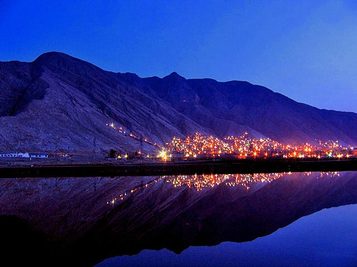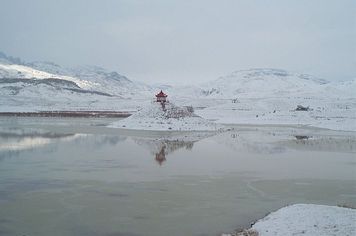Quetta
|
|
Quick Facts
|
Quetta (Pashto: کوټه Urdu: کوئٹہ) is the largest city and the provincial capital of the Balochistan Province of Pakistan. It is known as the "Fruit Garden of Pakistan", due to the diversity of its plant and animal wildlife. Situated at an average elevation of 1,654 metres (5,429 feet) above sea level. The city is a major stronghold along the western frontier of the country. The city is also home to the Hazarganji Chiltan National Park, which contains some of the rarest species of wildlife in the world and to a research institute, the Geological Survey of Pakistan.
Quetta sits near the Durand Line border with Afganistan and is an important trade and communications centre between the two countries as well as an important military location occupying a vital strategic position for the Pakistan Armed Forces. The city lies on the Bolan Pass route which was once the only gateway to and from South Asia. The city was the closest city to the 1935 and the 2008 earthquakes both of which resulted in a great deal of damage to the city and significant loss of life.
Quetta sits near the Durand Line border with Afganistan and is an important trade and communications centre between the two countries as well as an important military location occupying a vital strategic position for the Pakistan Armed Forces. The city lies on the Bolan Pass route which was once the only gateway to and from South Asia. The city was the closest city to the 1935 and the 2008 earthquakes both of which resulted in a great deal of damage to the city and significant loss of life.
Etymology
Quetta is also spelled Kuwatah which is a variation of Kuatta, a Pashto word meaning "fort".It is believed the city's name is derived from the three imposing hills (Chiltan, Takatu, Mehrdar) which surround the city and which act as a natural fort.
History of Quetta

The area was originally inhabited by the Kasi a (Pashtun) Tribe. The first detailed account of Quetta is from the 11th century when it was captured by Mahmud of Ghazni during one of his invasions of the Indian sub-continent. In 1543 the Mughal emperor Humayun rested in Quetta on his retreat to Persia, leaving his one-year-old son Akbar in the city until his return two years later. The Mughals ruled Quetta until 1556, when the Persians conquered the city, only to have it retaken by Akbar in 1595. In 1828 the first westerner to visit Quetta described it as a mud-walled fort surrounded by three hundred mud houses. Although occupied briefly in 1839 by the British during the First Afghan War,it was not until 1876 that Quetta became part of the British Empire with Robert Sandeman being made the political leader for Baluchistan. The arrival of British troops led to the establishment, mainly for strategic purposes, of road and rail links and the introduction of schools.
The British made the largely Pashtun area part of British Balochistan - which was resented by many of the Pashtun tribes. In April 1883 it was combined with Pishin into a single administrative unit.
By the time of the earthquake on 31 May 1935, Quetta had developed into a bustling city with a number of multi-storey buildings. The earthquake, the epicentre of which was close to the city, destroyed most of the city infrastructure and killed an estimated 40,000 people. In the years since the city has been rebuilt mainly with local funds. Structures are now generally earthquake resistant comprising single storey structures built with bricks and re-inforced concrete.
At partition in 1947 the tribal leaders of Pashtoon led by Nawab Muhammad Khan Jogizai, Malak Wazeer Khan Kasi and Malak Umar khan Kasi called a Jirga in the Quetta Municipal Committee Hall at which it was decided to be remain a separate state. The decision was rejected by the British Government which required them to chose between India and Pakistan. The decision was to join the newly formed state of Pakistan.
On joining Pakistan Quetta was made as the capital city of the newly created province of Balochistan before it was combined with other Balochi states (Kalat, Makran, Lasbela and Kharan) to form (Pashtoon province). Quetta was to remain the capital of province until 1971.
The British made the largely Pashtun area part of British Balochistan - which was resented by many of the Pashtun tribes. In April 1883 it was combined with Pishin into a single administrative unit.
By the time of the earthquake on 31 May 1935, Quetta had developed into a bustling city with a number of multi-storey buildings. The earthquake, the epicentre of which was close to the city, destroyed most of the city infrastructure and killed an estimated 40,000 people. In the years since the city has been rebuilt mainly with local funds. Structures are now generally earthquake resistant comprising single storey structures built with bricks and re-inforced concrete.
At partition in 1947 the tribal leaders of Pashtoon led by Nawab Muhammad Khan Jogizai, Malak Wazeer Khan Kasi and Malak Umar khan Kasi called a Jirga in the Quetta Municipal Committee Hall at which it was decided to be remain a separate state. The decision was rejected by the British Government which required them to chose between India and Pakistan. The decision was to join the newly formed state of Pakistan.
On joining Pakistan Quetta was made as the capital city of the newly created province of Balochistan before it was combined with other Balochi states (Kalat, Makran, Lasbela and Kharan) to form (Pashtoon province). Quetta was to remain the capital of province until 1971.
Climate and Geography
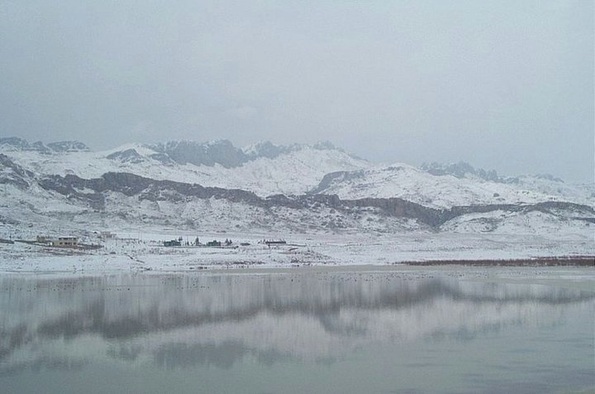
Hanna Lake In winter
Quetta has a continental, arid climate with a significant variation between summer and winter temperatures. Summer starts in late May and goes on until early September with average temperatures ranging from 24-26°C (75-78°F). Autumn starts in late September and continues until mid-November with average temperatures in the 12-18°C (55-65°F) range. Winter starts in late November and ends in late March, with average temperatures near 4-5°C (39-41°F). Spring starts in early April and ends in late May, with average temperatures close to 15°C (60°F). Unlike most of Pakistan, Quetta does not have a monsoon season of sustained, heavy rainfall. In the winter snow is the principle mode of precipitation with snow falling mostly in the months of December, January and February.
The city of Quetta comprises approximately 2,653 km2 (1,036 square miles) and consists of series of valleys which act as a natural fort surrounded on all sides by a number of imposing hills named Chiltan, Takatoo, Murdar and Zarghun. There are no natural boundaries between Quetta and its adjoining districts of Dera Ismail Khan to the northeast, Dera Ghazi Khan and Sibi to the east, Sukkur and Jacobabad to the southeast, Karachi and Gawadar to the east and Ziarat to the southwest. The closest major city is Kandahar in Afganistan which is located to the west of the Quetta.
The city of Quetta comprises approximately 2,653 km2 (1,036 square miles) and consists of series of valleys which act as a natural fort surrounded on all sides by a number of imposing hills named Chiltan, Takatoo, Murdar and Zarghun. There are no natural boundaries between Quetta and its adjoining districts of Dera Ismail Khan to the northeast, Dera Ghazi Khan and Sibi to the east, Sukkur and Jacobabad to the southeast, Karachi and Gawadar to the east and Ziarat to the southwest. The closest major city is Kandahar in Afganistan which is located to the west of the Quetta.
Government and politics
Under the latest revision of Pakistan's administrative structure, promulgated in 2001, Quetta was restructured as a City District, and divided into two towns Each town in turn consists of a group of union councils.
- Zarghoon Town
- Chiltan Town
Demography
Quetta was historically a Part of Kallat state until it was captured by the British in the mid-19th century, during the Second Anglo-Afghan War. The city in general is dominated by [Baloch and Pashtun people] followed by Baloch people, with Brahuis, Hazaras, Punjabi and others as the minority groups. Most of the Baloch people in Quetta arrived after 1970, when a new province with the name of Balochistan was created. The major Pashtun tribes which live in Quetta are Gharghasht, Kakar, Daavi, and others.
Pashto and Brahvi are the main languages spoken throughout the city. Other languages include Urdu, Balochi, Hazaragi, Sindhi, and Punjabi. The city has expanded from a population of just 11,000 in 1891 to a total of between 565,137 to 676,941 according to the 1998 census which makes it the ninth biggest city in Pakistan.Although the majority were repatriated back to Afghanistan through the UNHCR, a small number of registered Afghan refugees are still to be found in and around the city but are not counted in the national census of Pakistan as they are citizens of Afghanistan deemed to be remaining in the country temporarily.
About 99% of the people are Muslims, which include the majority Sunni sect and the minority Shias most of whom are the Hazaras. There is also a Christian, Hindu, and Sikh population living in the city.
Pashto and Brahvi are the main languages spoken throughout the city. Other languages include Urdu, Balochi, Hazaragi, Sindhi, and Punjabi. The city has expanded from a population of just 11,000 in 1891 to a total of between 565,137 to 676,941 according to the 1998 census which makes it the ninth biggest city in Pakistan.Although the majority were repatriated back to Afghanistan through the UNHCR, a small number of registered Afghan refugees are still to be found in and around the city but are not counted in the national census of Pakistan as they are citizens of Afghanistan deemed to be remaining in the country temporarily.
About 99% of the people are Muslims, which include the majority Sunni sect and the minority Shias most of whom are the Hazaras. There is also a Christian, Hindu, and Sikh population living in the city.
Culture
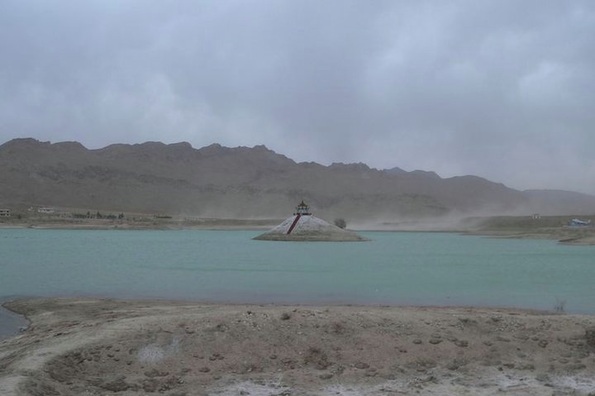
Hanna Lake
Quetta is a tourist attraction for foreigners to whom it is advertised as a "thrilling location, full of adventure and enjoyment". Among the attractions are the bazaars located on the Shahrah-e-Iqbal (Kandahari Bazaar) and Shahrah-e-Liaquat (Liaquat Bazaar and Suraj Gang Bazaar. In the bazaars are colourful handicrafts, particularly Balochi mirror work and Pashtun embroidery both of which are admired world-wide. The Pashtun workers are expert in making fine Afghan rugs, with their pleasing and intricate designs, fur coats, embroidered jackets, waist-coats, sandals and other traditional Pashtun items. Also in the city is the army administered Askari Park, constructed in the 1990's and located on Airport Road, which has a children's playground equipped with modern rides, toys and entertainment.
Balochi carpets are made by the nomadic tribes of the area. They are generally not nearly as fine or expensive as either the Persian city products or even the Turkoman tribal rugs from further north, but they are generally more authentic than the copies of Turkoman and Persian designs often found in the major cities of Pakistan. The rugs range in price and size, from lower priced crude examples to fine and valuable pieces. Many are small enough to be portable.
For those interested in local cuisine, there are many dishes to try. The famous Pashtun tribal cuisine “Roash” whch non-locals call “Namkin” is to be found in both city restaurants as well as in the outlying areas. Some of the finest mutton in the country is raised around Quetta and is a mainstay of local cuisine. The Pashtun tribal dish, “Landhi”, is made of a whole lamb which is dried and kept fresh during the cold winters. "Khadi Kebab" is a lamb barbecue while "Sajji" (leg of lamb) and "Pulao" are other local dishes. The best restaurants are the Green Hotel, Gulab Hotel, Lal Kabab, Tabaq, Usmania and the Abasin Hotel all of which serve both Pakistani and western food, while the Cafe China is one of the oldest and most reputable Chinese restaurants. A number of small hotels on the Alamdar road provide accommodation for tourists.
Hanna Lake, which nestles in the hills ten kilometres (six miles) east of the city, is a startling turquoise pool which contrasts markedly with its bare brown surroundings. An attraction for holidaymakers, with facilities for boat hire and a lakeside restaurant, it is crowded by hikers and campers in holiday periods. At one end there is an irrigation dam while on the eastern shore line there is the Hayat Durrani Water Sports Academy, the only water sports training center in Balochistan Province. The Hana Lake Development Authority, the Hayat Durrani Water Sports Academy and Merck Marker (Pvt.) Ltd. have planted a range of trees in the Hanna Lake Mountains both for beautification and the protection of the environment .
The Hazarganji Chiltan National Park, 20 km (13 miles) south-west of Quetta, Markhors is a protected park area. The park, the name Hazarganji literally means "Of a thousand treasures", is spread over 32,500 acres, at an altitude ranging from 2,021 to 3,264 metres (5,625 to 10,700 feet). In the folds of the mountains, according to legend , there are over a thousand treasures buried, reminders of the passage over the ages of great armies including theBactrains, the Scythians, the Muslims, and the Mongols.
Pir Ghaib is a waterfall and picnic point located 70 km from the City Center on Sibi Road. Kharkhasa is located 10 km (6 miles) west of Quetta in a 16 km (10 miles) long narrow valley which contains a variety of flora and fauna species. The Chiltan Hill Viewpoint in the park provides a panoramic view over the city. A visit to the nearby cities of Kirani and Ziarat has been a popular stop for tourists travelling to and from Quetta.
The Quetta Geological Museum, Sariab Road (near Balochistan University) has a collection of rocks and fossils found in Balochistan. The Command and Staff College Museum is a museum dedicated to British military history. It is housed in the former bungalow of Field Marshal Bernard Montgomery. The Quetta Archaeological Museum, Fifa Road has a collection of rare antique guns, swords, manuscripts and a display of Stone Age tools, prehistoric pottery and articles found in Mehrgarh. There are also coins, manuscripts and photos of Quetta before the 1935 earthquake. The Balochistan Arts Council Library is a newly opened facility which houses a variety of arts and crafts from Balochistan province.
A number of cultural and religious festivals are held in the city every year. The two Eid festivals which mark the end of fasting and the end of the Hajj allow the majority Muslim community to put on musical shows, distribute sweets and presents. The Sibi festival is a cultural festival celebrating the history of the Balochi people with folk music performance, cultural dances, handicrafts stalls and cattle and horse shows. Buzkashi is a peculiar festival celebrated by Pashtuns in which two teams on horse-back attempt to snatch a goat from each other.
Balochi carpets are made by the nomadic tribes of the area. They are generally not nearly as fine or expensive as either the Persian city products or even the Turkoman tribal rugs from further north, but they are generally more authentic than the copies of Turkoman and Persian designs often found in the major cities of Pakistan. The rugs range in price and size, from lower priced crude examples to fine and valuable pieces. Many are small enough to be portable.
For those interested in local cuisine, there are many dishes to try. The famous Pashtun tribal cuisine “Roash” whch non-locals call “Namkin” is to be found in both city restaurants as well as in the outlying areas. Some of the finest mutton in the country is raised around Quetta and is a mainstay of local cuisine. The Pashtun tribal dish, “Landhi”, is made of a whole lamb which is dried and kept fresh during the cold winters. "Khadi Kebab" is a lamb barbecue while "Sajji" (leg of lamb) and "Pulao" are other local dishes. The best restaurants are the Green Hotel, Gulab Hotel, Lal Kabab, Tabaq, Usmania and the Abasin Hotel all of which serve both Pakistani and western food, while the Cafe China is one of the oldest and most reputable Chinese restaurants. A number of small hotels on the Alamdar road provide accommodation for tourists.
Hanna Lake, which nestles in the hills ten kilometres (six miles) east of the city, is a startling turquoise pool which contrasts markedly with its bare brown surroundings. An attraction for holidaymakers, with facilities for boat hire and a lakeside restaurant, it is crowded by hikers and campers in holiday periods. At one end there is an irrigation dam while on the eastern shore line there is the Hayat Durrani Water Sports Academy, the only water sports training center in Balochistan Province. The Hana Lake Development Authority, the Hayat Durrani Water Sports Academy and Merck Marker (Pvt.) Ltd. have planted a range of trees in the Hanna Lake Mountains both for beautification and the protection of the environment .
The Hazarganji Chiltan National Park, 20 km (13 miles) south-west of Quetta, Markhors is a protected park area. The park, the name Hazarganji literally means "Of a thousand treasures", is spread over 32,500 acres, at an altitude ranging from 2,021 to 3,264 metres (5,625 to 10,700 feet). In the folds of the mountains, according to legend , there are over a thousand treasures buried, reminders of the passage over the ages of great armies including theBactrains, the Scythians, the Muslims, and the Mongols.
Pir Ghaib is a waterfall and picnic point located 70 km from the City Center on Sibi Road. Kharkhasa is located 10 km (6 miles) west of Quetta in a 16 km (10 miles) long narrow valley which contains a variety of flora and fauna species. The Chiltan Hill Viewpoint in the park provides a panoramic view over the city. A visit to the nearby cities of Kirani and Ziarat has been a popular stop for tourists travelling to and from Quetta.
The Quetta Geological Museum, Sariab Road (near Balochistan University) has a collection of rocks and fossils found in Balochistan. The Command and Staff College Museum is a museum dedicated to British military history. It is housed in the former bungalow of Field Marshal Bernard Montgomery. The Quetta Archaeological Museum, Fifa Road has a collection of rare antique guns, swords, manuscripts and a display of Stone Age tools, prehistoric pottery and articles found in Mehrgarh. There are also coins, manuscripts and photos of Quetta before the 1935 earthquake. The Balochistan Arts Council Library is a newly opened facility which houses a variety of arts and crafts from Balochistan province.
A number of cultural and religious festivals are held in the city every year. The two Eid festivals which mark the end of fasting and the end of the Hajj allow the majority Muslim community to put on musical shows, distribute sweets and presents. The Sibi festival is a cultural festival celebrating the history of the Balochi people with folk music performance, cultural dances, handicrafts stalls and cattle and horse shows. Buzkashi is a peculiar festival celebrated by Pashtuns in which two teams on horse-back attempt to snatch a goat from each other.
Sports
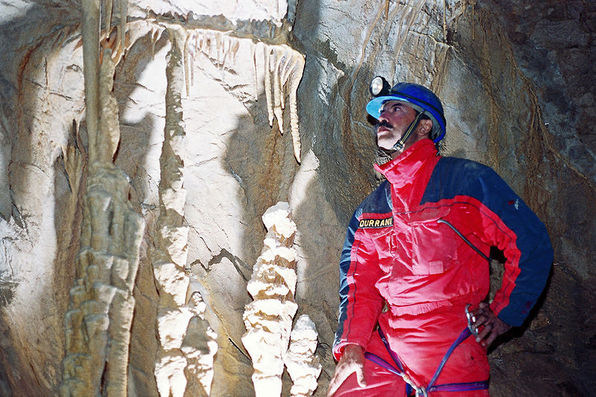
Hayatullah Khan Durrani in Deep Descending Shaft cave of Pakistan
The residents of the city are avid sports fans. Unlike in most of Pakistan, football rather than cricket is the most popular sport. Football teams from Quetta include Quetta Zorawar, Afghan Football, Hazara Green Football, Baluch Football and Quetta Bazigars Club. Among its most famous footballers are Abdul Wahid Durrani (Wahido) Taj Senior, Taj Junior, Qayyum Changezi, Agha Gul, Mohammad Younas Changezi, Mohammad Ismaeel Durrani (a famous goal keeper)and his son, Dawood Durrani of the PIA football team, and Kazim Ali Sheralyat, the former captain of Pakistan. Other sportsmen include the body-builders Shoukat Ali Changezi (Mr.Norway), Din Mohammad Brohvi (Mr. Pakistan) and Noorullah Khan Durrani,(Mr. Pakistan Runner-up) and the cricketer Shoaib Khan a former member of the Pakistan national cricket team.
In field hockey Quetta has produced Zeeshan Ashraf and Shakeel Abbasi who are current members of the Pakistan national field hockey team. In Mountain climbing and cavingthere is Hayatullah Khan Durrani (Pride of Performance) the chief executive of Hayat Durrani Water Sports Academy at Hanna Lake. In Kayaking, Muhammad Abubakar Durrani, National Junior Champion was selected for the world Junior Canoeing Championship in 2009 in Moscow. In Boxing Olympians from Quetta include: Abdul Salam Khan Kakar, Syed Ibrar Ali Shah, Asghar Ali Changezi and Haider Ali Changezi.
In squash Hiddy Jahan Khan was ranked among the top-6 players in the world from 1970 through to 1986. British Open champion Qamer Zaman also hails from Quetta. Other famous squash players include: Zarak Jahan Khan, Abdul Wali Khan Khilji, Hamayoon Khan Khilji, Zubair Jahan Khan, Shams ul Islam Khan Kakar, Tariq Rahim Khan Kakar and Shaied Zaman Khan. The Ayub National Stadium is the largest stadium in the city and the site of international cricket and football matches.
In field hockey Quetta has produced Zeeshan Ashraf and Shakeel Abbasi who are current members of the Pakistan national field hockey team. In Mountain climbing and cavingthere is Hayatullah Khan Durrani (Pride of Performance) the chief executive of Hayat Durrani Water Sports Academy at Hanna Lake. In Kayaking, Muhammad Abubakar Durrani, National Junior Champion was selected for the world Junior Canoeing Championship in 2009 in Moscow. In Boxing Olympians from Quetta include: Abdul Salam Khan Kakar, Syed Ibrar Ali Shah, Asghar Ali Changezi and Haider Ali Changezi.
In squash Hiddy Jahan Khan was ranked among the top-6 players in the world from 1970 through to 1986. British Open champion Qamer Zaman also hails from Quetta. Other famous squash players include: Zarak Jahan Khan, Abdul Wali Khan Khilji, Hamayoon Khan Khilji, Zubair Jahan Khan, Shams ul Islam Khan Kakar, Tariq Rahim Khan Kakar and Shaied Zaman Khan. The Ayub National Stadium is the largest stadium in the city and the site of international cricket and football matches.
Flora and fauna
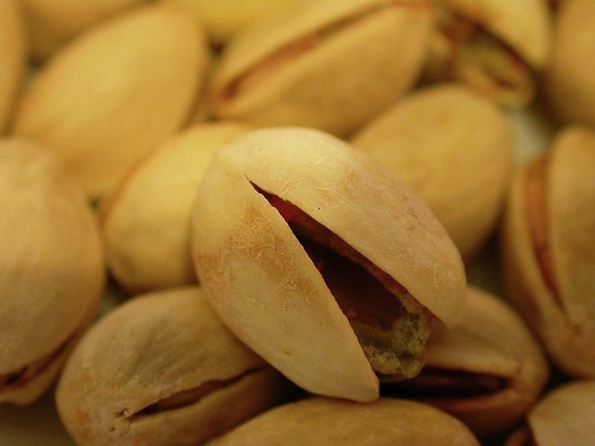
Pistachios in shell
A wide variety of mammals such as Markhor, "Gad" (wild sheep), leopards, wolves, hyena, rabbits, wild cats and porcupines are to be be found in the Quetta region. Local birds species include partridge, warblers, shikra, the blue rock pigeon, rock nuthatch, golden eagle, sparrows, hawks, falcons and bearded vultures. Flora in Quetta is both numerous and rare. A total of 225 species have been identified in the area including; pistachios, juniper, wild olives, wild ash and wild almonds. Also found are a wide range of shrubs including; wild fig, barbery, wild cherry, makhi and herbs such as ephedra intermadia and gerardiana.
Infrastructure
Education
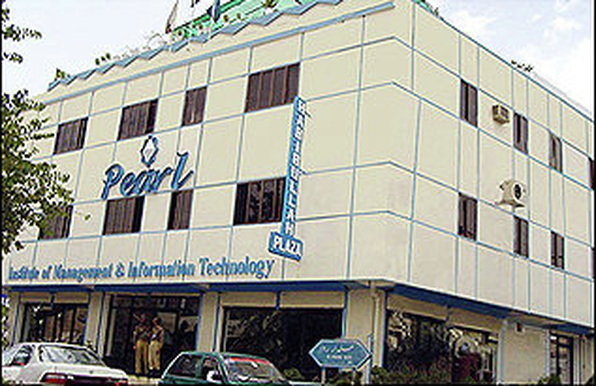
PEARL Institute, Quetta
Quetta has a number of institutions of higher education. The prestigious military Command and Staff College, which was founded by the British, recently celebrated its hundredth anniversary. The city is also the home to the University of Balochistan which was established in 1974, the Balochistan University of Information Technology, Engineering and Management Sciences, the Geological Survey of Pakistan, the Sandeman Library and two government colleges affiliated with the University of Peshawar.
The PEARL Institute of Management and Information technology is located in Quetta, Pakistan. The institute is affiliated with University of Balochistan, Virtual University, BBISE, ABE-UK, PIPFA and various other public and private higher educational bodies to serve, deliver, promote and transfer knowledge for highly skilled human resources.
The PEARL Institute of Management and Information technology is located in Quetta, Pakistan. The institute is affiliated with University of Balochistan, Virtual University, BBISE, ABE-UK, PIPFA and various other public and private higher educational bodies to serve, deliver, promote and transfer knowledge for highly skilled human resources.
Transport
By Air
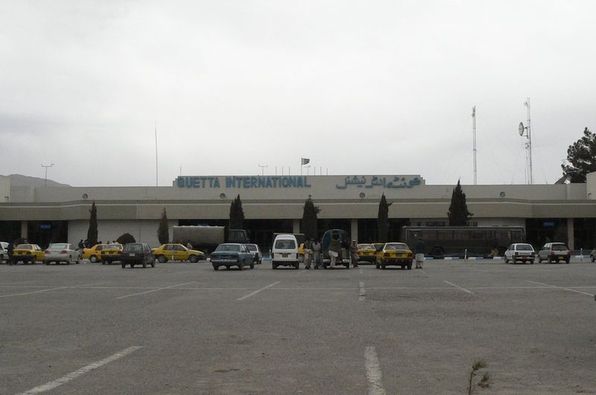
Quetta is on the western edge of Pakistan and is well connected to the rest of the country by a network of roads, railways and airways.At an altitude of 1,605 metres (5,260 feet) above sea level, Quetta Airport is the second highest airport in Pakistan. Pakistan International Airlines, Shaheen Air International and Airblue all have regular flights between Quetta and the other major cities of Pakistan including Islamabad, Gwadar, Karachi, Lahore and Peshawar while Pakistan International Airlines operates direct flights to Manchester, Dubai, New York and other major international airports.
By Land
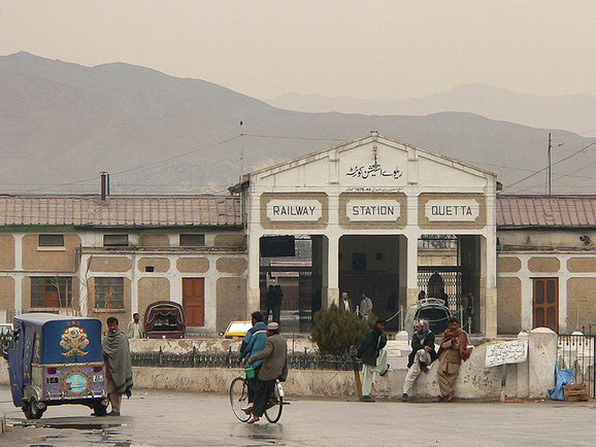
Quetta Railway Station is one of the highest railway stations in Pakistan at 1,676 metres (5,495 ft) above sea level. The railway track was laid in 1890's during the British era to link Quetta with rest of the country. The extensive network of Pakistan Railways connects Quetta to Karachi in south, by a 863 km (536 miles) track, Lahore in northeast (1,170 km or 727 miles) and Peshawar further northeast (1,587 km or 986 miles). A metalled road runs alongside the railway that connects Quetta to Karachi via Sibi, Jacobabad and Rohri. A track from the Iranian city of Zahedan links to Quetta via Taftan. Service was temporarily discontinued in 2006 due to unrest in Balochistan. More recently railway service has come under renewed attack by the Balochs, especially in the Bolan Pass area, resulting in passenger deaths and creating a sense of insecurity amongst the travelling public.
Recently there has been a proposal to construct a railway track that will link Gawadar to China and Gawadar with Quetta via Kalat. Although the distance from Quetta to Lahore is only 700 km (417 miles), there is no direct track on this route because of the Sulaiman Range that lies in the east of Quetta. All northeast-bound trains for Punjab or the North-West Frontier Province must first go over 350 km (218 miles) south to Rohri, Sindh (near Sukkur) before continuing north to Punjab and/or the North-West Frontier Province. .
Quetta is connected by metalled roads to the rest of the country. A recently built road connects it with Karachi through Mastung, Kalat, Khuzdar and Lasbela. Other major roads are Quetta to Karachi following the Sibi, Jacobabad, Sukkur and Hyderabad route and two roads from Quetta to Lahore one (the older) via Sibi, Sukkur, Rahim Yar Khan, Bahawalpur and Multan the other route via Khanozai, Muslimbagh Loralai, Fort Mondro, Dera Ghazi Khan and Multan. Quetta is also connected with Afghanistan through Chaman and to Iran through Mastung, Nushki, Dalbandin and Taftan.
Recently there has been a proposal to construct a railway track that will link Gawadar to China and Gawadar with Quetta via Kalat. Although the distance from Quetta to Lahore is only 700 km (417 miles), there is no direct track on this route because of the Sulaiman Range that lies in the east of Quetta. All northeast-bound trains for Punjab or the North-West Frontier Province must first go over 350 km (218 miles) south to Rohri, Sindh (near Sukkur) before continuing north to Punjab and/or the North-West Frontier Province. .
Quetta is connected by metalled roads to the rest of the country. A recently built road connects it with Karachi through Mastung, Kalat, Khuzdar and Lasbela. Other major roads are Quetta to Karachi following the Sibi, Jacobabad, Sukkur and Hyderabad route and two roads from Quetta to Lahore one (the older) via Sibi, Sukkur, Rahim Yar Khan, Bahawalpur and Multan the other route via Khanozai, Muslimbagh Loralai, Fort Mondro, Dera Ghazi Khan and Multan. Quetta is also connected with Afghanistan through Chaman and to Iran through Mastung, Nushki, Dalbandin and Taftan.

